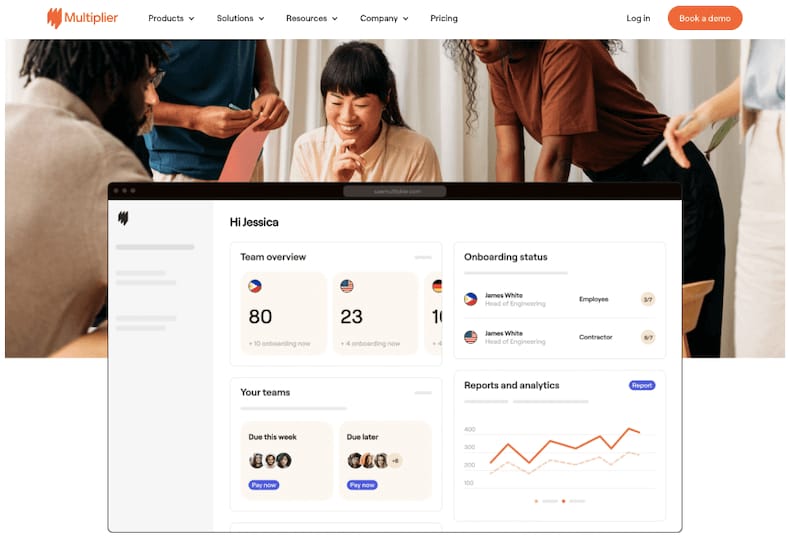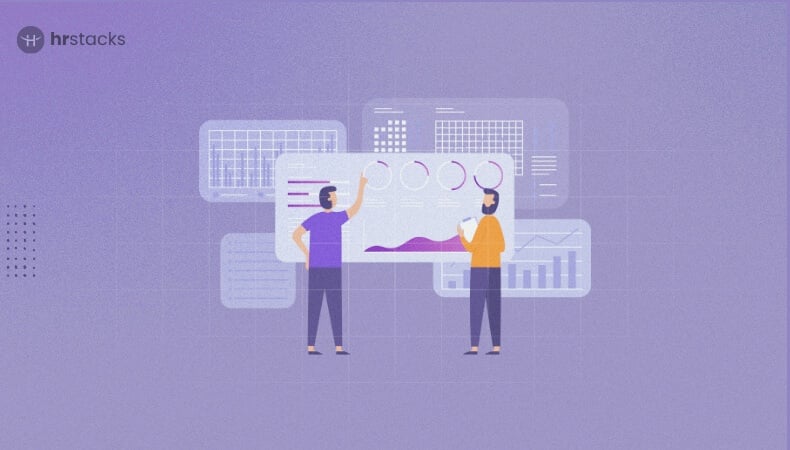Issue #5 • July 25, 2025

The world of HR is evolving faster than ever, and staying ahead means knowing where tech, culture, and people strategy intersect.
🖋️ In This Edition of People Stack:
The future of HR: from admin-heavy to strategy-led
Multiplier: global PEO for seamless hiring and compliance
3 guides on predictive analytics, EOR risks, and India hiring
AI’s real impact on headcount, hiring, and HR strategy
How HR can lead with ethics, culture, and data
Whether you're building culture at a startup or scaling a global team, these reads will sharpen your edge and expand your thinking.
✏ Editorial
Does HR Still Have a Future?

Every once in a while, someone in the HR community, on Reddit, in Slack groups, or at a conference, asks a question that feels both existential and urgent:
“Does HR still have a future?”
This is not a throwaway question. With AI automating everything from resume screening to employee onboarding, and with companies restructuring to flatten hierarchies, HR teams are understandably wondering:
What’s our role in a world of automation, algorithmic decisions, and always-on workforces?
Let’s get this out of the way: Yes, HR has a future. But it won’t look like it’s past.
The Legacy of Admin-Heavy HR Is Ending
Much of what HR used to own, forms, compliance, onboarding checklists, policy enforcement, is now handled by platforms like Deel, BambooHR, and Workday.
One HR professional put it best: “We spend more time fighting bad automation than doing meaningful work.”
This isn’t about redundancy. It’s about relief. HR isn’t being pushed out, it’s being freed up. Freed to step into a more strategic, human-centered role that technology simply can’t replicate.
Think about it:
AI can scan a resume.
It can’t decode team dynamics.
It can send out a pulse survey.
It can’t rebuild trust after a toxic manager implodes.
What the Data (and Workers) Are Telling Us
In recent CEO surveys, workforce and talent strategy consistently rank among the top three business priorities, alongside growth and technology.
Yet analysts point to a growing confidence gap between executive expectations and their trust in HR’s ability to deliver.
The opportunity here is clear: HR has permission to lead, but it must level up.
At the same time, employee expectations are evolving. Workers want purpose, flexibility, growth, and fairness.
That’s not a benefits admin task; that’s a culture and people strategy issue.
And globally, new AI and workplace safety regulations are emerging, requiring thoughtful human oversight, not just automated compliance tools.
The future of HR lies in navigating these tensions: Between automation and empathy. Scale and personalization. Efficiency and fairness.
So What Does the Future of HR Actually Look Like?
It looks like this:
Strategic Business Partnering: HR isn’t “support” anymore. It’s a driver helping leaders make smarter talent decisions using workforce data and market intelligence.
People-First Design Thinking: Designing work experiences, not just policies that account for diverse needs, remote realities, and well-being.
AI Literacy and Ethical Oversight: Not fighting AI, but guiding its responsible use in hiring, development, and internal mobility.
Culture Stewardship: Acting as a translator between company values and employee realities. HR becomes the mirror and the compass.
In other words, the future of HR is less about “human resources” and more about human outcomes.
Tool in Focus: Multiplier

Best for: Global payroll, HR compliance, and benefits administration for businesses hiring across multiple countries
Multiplier is a modern global employment platform offering Professional Employer Organization (PEO) services to help businesses compliantly hire, pay, and manage international talent.
With built-in global payroll, benefits, and localized HR compliance, Multiplier simplifies the complex process of managing a distributed workforce, without the need to set up entities.
✅ Key Features:
Hire and onboard employees in 150+ countries without local entities
Run compliant payroll with automated tax calculations and filings
Offer locally compliant health insurance, pensions, and benefits packages
Handle employee contracts, expense claims, leave, and time tracking
Stay up to date with in-country labor laws and regulatory changes
Access multilingual support and employment law experts
Why We Like It:
Multiplier brings together EOR and PEO capabilities under one intuitive platform, making it ideal for startups and scaling companies looking to manage international employees with confidence. It’s especially strong in APAC and emerging markets, where local compliance is complex and costly to manage in-house.
📚 Good to Read: Fresh Picks for HR Teams
From Our Publications:
From Around the Web:
How internal AI tools helped ServiceNow cut planned hiring by $100M in 2025, demonstrating AI's direct impact on workforce planning, and raising critical questions about automation and the future of white-collar work.
Former Google HR head Laszlo Bock defends Meta’s nine-figure offers to AI researchers, arguing hiring individuals is more cost-effective than acquisitions, underscoring the fierce competition for AI talent.
Highlights candidate behavior during the AI hiring boom: ghosting, embellishment, and AI misuse in job-seeking. Shows how HR must adapt to maintain process integrity and improve candidate experience.
Outlined by HR Chief Maryjo Charbonnier, this “AIR” framework (Anticipate, Integrate, Reskill & Redeploy) shows how HR can proactively drive AI transformation and align talent strategies with business needs.





